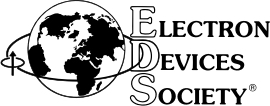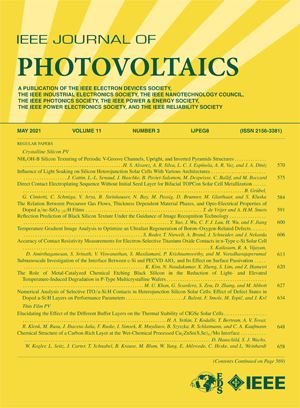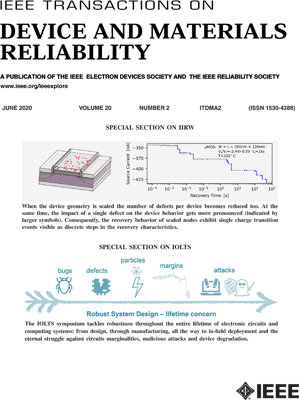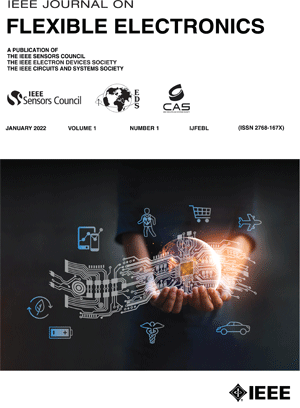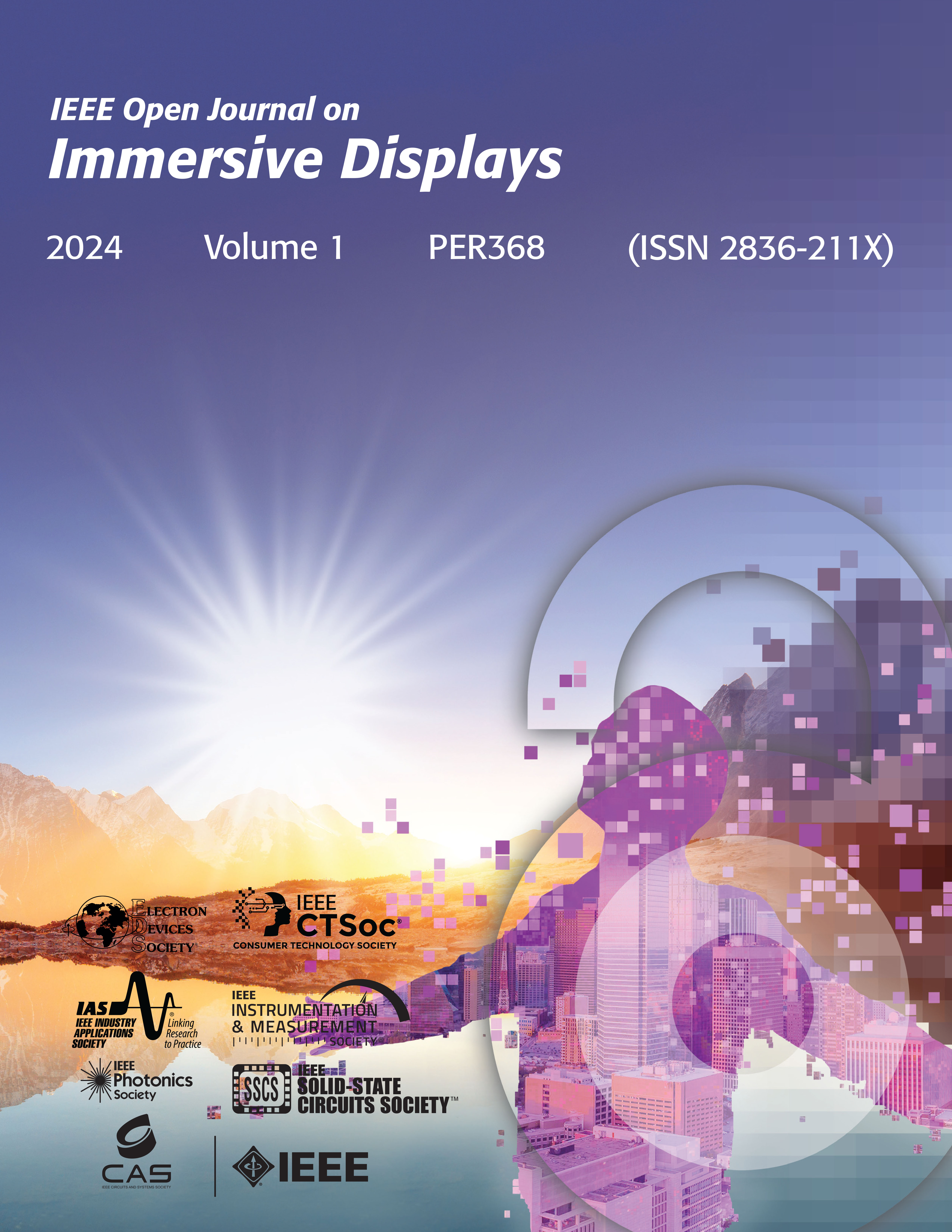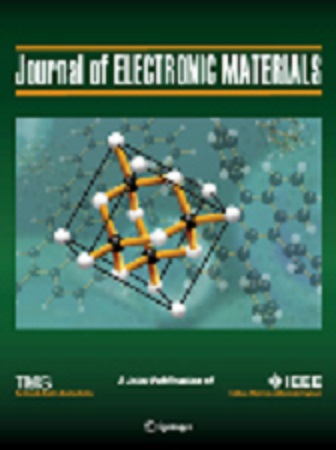Publications
EDS publications and products are a great resource for scientists and engineers in the key technology areas of electron device engineering, an area EDS has been the leading publisher since 1954. The society publishes over a dozen flagship, industry-leading periodicals and journals, either wholly- or co-sponsored, that offer students, faculty, staff, scientists and engineers, access to interesting, reliable, and relevant technical content that will inspire their next milestone paper, invention or discovery. The EDS aspires to the continued development of new publications and products aimed to serve the electron device community, stay up-to-date on current trends, and advance their skills and professional development. This publication dynamism is designed to help engineers at all levels accelerate their fundamental understanding of emerging device, circuit and systems integration technologies and techniques. As such its products provide an excellent platform to showcase research results, whether it is from academia or industry, at the highest standard of quality possible for increased global visibility.
IEEE Electron Device Letters
The IEEE Electron Device Letters publishes original and significant contributions relating to the theory, modeling, design, performance and reliability of electron and ion integrated circuit devices and interconnects, involving insulators, metals, organic materials, micro-plasmas, semiconductors, quantum-effect structures, vacuum devices, and emerging materials with applications in bioelectronics, biomedical electronics, computation, communications, displays, microelectromechanics, imaging, micro-actuators, nanoelectronics, optoelectronics, photovoltaics, power ICs and micro-sensors.
IEEE Transactions on Electron Devices
The IEEE Transactions on Electron Devices publishes original and significant contributions relating to the theory, modeling, design, performance and reliability of electron and ion integrated circuit devices and interconnects, involving insulators, metals, organic materials, micro-plasmas, semiconductors, quantum-effect structures, vacuum devices, and emerging materials with applications in bioelectronics, biomedical electronics, computation, communications, displays, microelectromechanics, imaging, micro-actuators, nanoelectronics, optoelectronics, photovoltaics, power ICs and micro-sensors. Tutorial and review papers on these subjects are also published and occasional special issues appear to present a collection of papers which treat particular areas in more depth and breadth.
IEEE Journal of the Electron Devices Society
The IEEE Journal of the Electron Devices Society is an open-access, fully electronic scientific journal publishing papers ranging from fundamental to applied research that are scientifically rigorous and relevant to electron devices. The J-EDS publishes original and significant contributions relating to the theory, modelling, design, performance, and reliability of electron and ion integrated circuit devices and interconnects, involving insulators, metals, organic materials, micro-plasmas, semiconductors, quantum-effect structures, vacuum devices, and emerging materials with applications in bioelectronics, biomedical electronics, computation, communications, displays, microelectromechanics, imaging, micro-actuators, nanodevices, optoelectronics, photovoltaics, power IC's, and micro-sensors. Tutorial and review papers on these subjects are also published and occasional special issues appear to present a collection of papers in particular areas.
EDS Newsletter
The IEEE Electron Devices Society Newsletter features technical briefs by well-known experts, as well as in-depth coverage of volunteer-led, educational and professional development events.In each issue you will read about important international technology conferences, student funding opportunities, prestigious society awards, and highlights of our society community outreach programs. You will need Adobe Acrobat Reader to view the PDF files. The EDS Newsletter is also available in the IEEE App.
IEEE Journal of Photovoltaics
The IEEE Journal of Photovoltaics (JPV) is a peer-reviewed archival publication reporting on original and significant research results in the field of photovoltaics (PV). The PV field is diverse, ranging from the science and engineering of PV materials and devices, to their application in cells, modules, photovoltaic generators, the design of systems of modules, and large-scale solar installations. Works describing enhancing PV reliability, and extending the system lifetime are welcome when PV is the focus. Manuscripts related to control and optimization of PV power-generation system performance are welcome where there is a direct relationship to the nature of the PV devices.
Tutorial and review papers on the above subjects are also published and occasionally special issues are produced to present a collection of papers which treat particular areas in more depth and breadth. Special issues may also be published directly related to topics of interest to the PV community, for example the best works presented at the IEEE Photovoltaic Specialists Conference.
IEEE Transactions on Device and Materials Reliability
The IEEE Transactions on Device and Materials Reliability includes, but is not limited to Reliability of: Devices, Materials, Processes, Interfaces, Integrated Microsystems (including MEMS & Sensors), Transistors, Technology (CMOS, BiCMOS, etc.), Integrated Circuits (IC, SSI, MSI, LSI, ULSI, ELSI, etc.), Thin Film Transistor Applications. The measurement and understanding of the reliability of such entities at each phase, from the concept stage through research and development and into manufacturing scale-up, provides the overall database on the reliability of the devices, materials, processes, package and other necessities for the successful introduction of a product to market. This reliability database is the foundation for a quality product, which meets customer expectations. A product so developed has high reliability. High quality will be achieved because product weaknesses will have been found (root cause analysis) and designed out of the final product. This process of ever increasing reliability and quality will result in a superior product. In the end, reliability and quality are not one thing; but in a sense everything, which can be or has to be done to guarantee that the product successfully performs in the field under customer conditions. Our goal is to capture these advances. An additional objective is to focus cross fertilized communication in the state of the art of reliability of electronic materials and devices and provide fundamental understanding of basic phenomena that affect reliability. In addition, the publication is a forum for interdisciplinary studies on reliability. An overall goal is to provide leading edge/state of the art information, which is critically relevant to the creation of reliable products.
IEEE Transactions on Semiconductor Manufacturing
The IEEE Transactions on Semiconductor Manufacturing publishes the latest advances related to the manufacture of microelectronic and photonic components and integrated systems, including photovoltaic devices and micro-electro-mechanical systems. Its principal aim is to continually enhance the knowledge base and improve manufacturing practice across the entire supply chain from fabrication to delivery of these devices. Areas of interest include process integration, manufacturing equipment performance and modeling, yield analysis and enhancement, metrology, process control, material handling, factory systems and all areas of factory and supply chain management related to the semiconductor industry including materials synthesis, equipment manufacturing, and mask making. Papers submitted to this journal should have a clear relevance to manufacturing practice, as opposed to device design and device characterization.
Journal of Microelectromechanical Systems
The IEEE Journal of Microelectromechnical Systems include, but are not limited to: devices ranging in size from microns to millimeters, IC-compatible fabrication techniques, other fabrication techniques, measurement of micro phenomena, theoretical results, new materials and designs, micro actuators, micro robots, micro batteries, bearings, wear, reliability, electrical interconnections, micro telemanipulation, and standards appropriate to MEMS. Application examples and application oriented devices in fluidics, optics, bio-medical engineering, etc., are also of central interest.
IEEE Journal on Flexible Electronics
The IEEE Journal on Flexible Electronics (J-FLEX) publishes cutting edge research covering all aspects of sensors, transistors, related devices, circuits, systems on flexible, disposable, stretchable and degradable substrates. This includes various functional and sustainable materials, material-integrated sensing, interface subsystems, corresponding actuators, energy harvesting, energy storage devices, modelling, simulation, manufacturing, integration or packaging in soft and flexible substrates and all applications of flexible electronics. Topics such as 3D printed or heterogenous integration, use of sustainable materials and processes aligned with circular economy are also in the scope of this journal.
Journal of Lightwave Technology
The Journal of Lightwave Technology is comprised of original contributions, both regular papers and letters, covering work in all aspects of optical guided-wave science, technology, and engineering. Manuscripts are solicited which report original theoretical and/or experimental results which advance the technological base of guided-wave technology. Tutorial and review papers are by invitation only. Topics of interest include the following: fiber and cable technologies, active and passive guided-wave componentry (light sources, detectors, repeaters, switches, fiber sensors, etc.); integrated optics and optoelectronics; and systems, subsystems, new applications and unique field trials. System oriented manuscripts should be concerned with systems which perform a function not previously available, out-perform previously established systems, or represent enhancements in the state of the art in general.
IEEE Electron Devices Magazine
The IEEE Electron Devices Magazine is published quarterly, with issues appearing in March, June, September and December. The magazine focuses on the publication of peer-reviewed tutorial and survey papers related to the wider field of electron devices and its application. This may also include articles dealing with environmental, societal, and humanitarian issues. Besides, columns by renowed experts are included, dealing with educational, industrial and open topics and sharing personal opinions in a compact format.
IEEE Open Journal on Immersive Displays (OJ-ID)
The IEEE Open Journal on Immersive Displays (OJ-ID) is gold open-access, fully electronic scientific journal publishing papers in immersive display science and applications. Immersive display technology is expected to explode with emergence of the massively-disruptive Web 3.0, where decentralization, trustless and permissionless access, artificial intelligence (AI) and machine learning, and connectivity and ubiquity, are expected to be characteristic attributes. Immersive displays are expected to be a critical interface fueling this development, just as smartphones, mobile WiFi, and social networks drove the expThe field of immersive displays is diverse, ranging from the science and engineering of materials and devices to their application in high definition, form-factor-independent displays featuring interactivity, virtual and augmented reality, and 3D content. Submissions on advanced fabrication processing, thin film active and passive devices, and lifetime and reliability evaluation will be welcomed when display is the focus or where there is a direct relationship to the nature of the display system. Tutorial and review papers extending the frontiers of immersive display technologies and novel applications will also be published. And, occasionally special issues with a collection of papers on particular areas in more depth and breadth will also be considered. OJ-ID will publish all papers that are judged to be technically valid and original, providing a home for articles ranging from letters to full-length articles covering newly emerging and rapidly expanding areas in display technology. Decisions will be made fast targeting less than a week for letters and six weeks for full-length articles with publication on-line immediately after acceptance. All research papers will benefit from rapid peer review and publication, and are deposited in IEEE Xploreonential growth of Web 2.0.
IEEE Journal on Exploratory Solid-State Computational Devices and Circuits (JXCDC)
The IEEE Journal on Exploratory Solid-State Computational Devices and Circuits (JXCDC) is an "Open Access" journal that focuses on multi-disciplinary research in solid-state circuits using exploratory materials and devices for novel energy efficient computation beyond standard CMOS (complementary Metal Oxide Semiconductor) technology. Focus is on the exploration of materials, devices and computation circuits to enable Moore’s Law to continue for computation beyond a 10 to 15 year horizon (beyond end of the roadmap for CMOS technologies) with the associated density scaling and improvement in energy efficiency. Examples of appropriate topics are research milestones in the integration of materials, devices and computation circuits based upon any of the following: Quantum electronic devices (e.g. tunneling), Spintronics and nanomagnetics, Straintronics (piezo-electric devices), Plasmonics, Functional materials, High fan-in, fan-out logic circuits, Reconfigurable and non-volatile computational circuits, Computational circuits comprehending the on-chip communication means.
This publication considers original works that enhance the existing body of knowledge. Results described in the article should not have been submitted or published elsewhere. Expanded versions of conference publications may be submitted. Articles must be intelligible and must be written in standard English.
Journal of Electronic Materials
The Journal of Electronic Materials (JEM) is a forum for rapid dissemination of the results of original research in electronic materials. Includes materials for memory, logic, display, interconnections, detectors, emitters, packaging, large stores and hard copy. General papers on electronic materials for device application, structure making, reliability and yield.
JEM is jointly sponsored by EDS and the Minerals, Metals, and Materials Society. EDS members can purchase an electronic or print/electronic combination subscription to JEM at a special, members-only rate.
For more information and to purchase your subscription, visit the IEEE Store.
 Transactions on Materials for Electron Devices
Transactions on Materials for Electron Devices
The IEEE Transactions on Materials for Electron Devices (T-MAT) publishes contributed and invited articles of different formats in the field of materials for electron devices and their interconnects.The focus of T-Mat is on the applied aspects of electronic materials, as well as fundamentals directly relevant to individual and integrated device engineering and fabrication.
